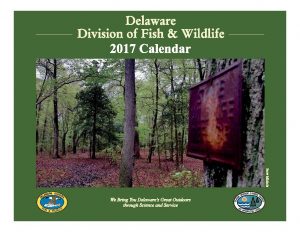DOVER – Many of us have heard that eating fish is a key part of a healthy diet. But how much should we eat and are there risks to pregnant women and children? In January, the U.S. Food and Drug Administration (FDA) and the U.S. Environmental Protection Agency (EPA) issued updated advice regarding fish consumption that applies to fish and shellfish caught commercially and sold in U.S. retail outlets. This advice is geared toward helping women who are pregnant or may become pregnant – as well as breastfeeding mothers and parents of young children – make informed choices when it comes to fish that is healthy and safe to eat. The federal guidelines are based on mercury levels found in certain commercial fish species and do not consider fish caught in Delaware waterways by recreational anglers or anglers who rely on locally caught fish to supplement their diets.
Fish and other protein-rich foods have nutrients that can help your child’s growth and development. However, all fish contain at least traces of mercury, which can be harmful to the brain and nervous system if a person is exposed to too much of it over time. Children are especially sensitive to mercury poisoning because their organs and tissues are still developing. If pregnant women ingest methylmercury in fish, there is a danger to the developing nervous systems of their unborn children.
An FDA analysis of fish consumption data found that 50 percent of pregnant women surveyed ate fewer than 2 ounces of fish a week, far less than the amount recommended. Because the nutritional benefits of eating lower-mercury fish are important for growth and development during pregnancy and early childhood, the FDA and EPA are advising and promoting a minimum level of seafood consumption for these groups.
The advice recommends two to three servings of lower-mercury fish per week, or 8 to 12 ounces. The new advice is consistent with the 2015-2020 Dietary Guidelines for Americans.
To help consumers more easily understand the types of fish to select, the agencies have created an easy-to-use reference chart that sorts 62 types of fish into three categories:
• “Best Choices” (eat two to three servings a week)
• “Good Choices” (eat one serving a week)
• “Fish to Avoid”
Fish in the “Best Choices” category make up nearly 90 percent of fish eaten in the United States and often have the lowest levels of mercury.
For adults, a typical serving is 4 ounces of fish, measured before cooking. It is recommended that women of childbearing age (about ages 16 to 49), especially pregnant and breastfeeding women, eat two to three servings of fish a week from the “Best Choices” list or one serving from the “Good Choices” list.
Serving sizes for children should be smaller and adjusted for their age and total calorie needs. It is recommended that starting at age 2, children eat approximately 2 ounces of fish once or twice a week. Everyone should eat a variety of fish types.
In June 2016, DPH and DNREC issued updated fish consumption advisories for fish caught by recreational anglers in Delaware’s fresh, estuarine and marine waters. The state advisories and more information can be found on the Department of Natural Resources and Environmental Control’s website here.
For additional federal information on fish consumption:
For answers to frequently asked questions about mercury, exposure and poisoning, visit http://www.dhss.delaware.gov/dhss/dph/files/mercuryfaq.pdf. Effects of mercury on the brain may include irritability, shyness, tremors, changes in vision or hearing, and memory problems. Short-term exposures to high levels of mercury may cause lung damage, vomiting, diarrhea, increases in blood pressure or heart rate, skin rashes, eye irritation, and kidney damage. Exposure to mercury affects the kidneys in pregnant women.
A person who is deaf, hard-of-hearing, deaf-blind or speech-disabled can call the DPH phone number above by using TTY services. Dial 7-1-1 or 800-232-5460 to type your conversation to a relay operator, who reads your conversation to a hearing person at DPH. The relay operator types the hearing person’s spoken words back to the TTY user. To learn more about TTY availability in Delaware, visit http://delawarerelay.com.
Delaware Health and Social Services is committed to improving the quality of the lives of Delaware’s citizens by promoting health and well-being, fostering self-sufficiency, and protecting vulnerable populations. DPH, a division of DHSS, urges Delawareans to make healthier choices with the 5-2-1 Almost None campaign: eat 5 or more fruits and vegetables each day, have no more than 2 hours of recreational screen time each day (includes TV, computer, gaming), get 1 or more hours of physical activity each day, and drink almost no sugary beverages.
The mission of the Department of Natural Resources and Environmental Control is to ensure the wise management, conservation and enhancement of the State’s natural resources, protect public health and the environment, provide quality outdoor recreation, improve the quality of life and educate the public on historic, cultural and natural resource use, requirements and issues.
